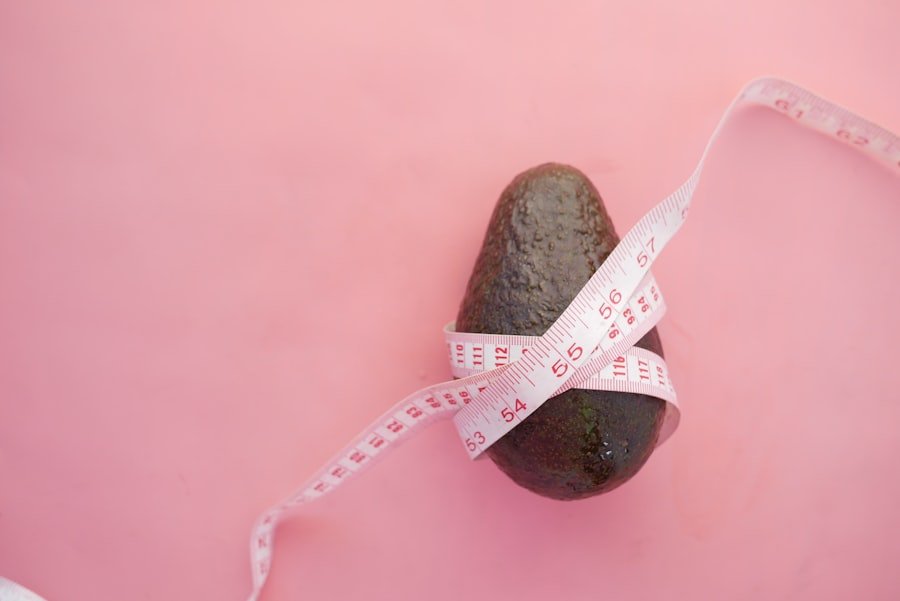The iPhone 11 and iPhone 12 represent two significant milestones in Apple’s smartphone evolution, each showcasing the company’s commitment to innovation and user experience. Released in September 2019, the iPhone 11 was a game-changer with its dual-camera system, impressive battery life, and vibrant Liquid Retina display. It was designed to appeal to a broad audience, offering a balance of performance and affordability.
The iPhone 12, launched in October 2020, took a bold step forward with its introduction of 5G capabilities, a new flat-edge design reminiscent of the iPhone 4 and 5, and the Super Retina XDR display that offered enhanced brightness and color accuracy. Both models cater to different user needs, but they also share a lineage that makes them comparable in many respects. As technology continues to advance at a rapid pace, the differences between these two models become increasingly relevant for consumers.
The iPhone 12 not only improved upon the features of its predecessor but also introduced new technologies that set a new standard for smartphones. This article will delve into the differences in size and design between the iPhone 11 and iPhone 12, explore the compatibility of cases between the two models, and discuss the implications of these differences for users looking to protect their devices.
Key Takeaways
- iPhone 12 and iPhone 11 are both popular models from Apple, with the iPhone 12 being the newer release.
- The iPhone 12 is slightly smaller and lighter than the iPhone 11, with a more squared-off design compared to the rounded edges of the iPhone 11.
- iPhone 12 cases may not be fully compatible with iPhone 11 due to differences in camera placement and size, but some cases may still fit with minor limitations.
- The design of the case can impact its compatibility with the iPhone 11, especially in terms of camera and button placement.
- When choosing a case for the iPhone 11, consider factors such as material, protection level, and design to ensure a good fit and functionality.
- Using an iPhone 12 case on an iPhone 11 may pose risks such as obstructing the camera or buttons, and may not provide a perfect fit.
- Alternatives for iPhone 11 users include seeking out specific iPhone 11 cases or exploring third-party options that are designed for the iPhone 11.
- In conclusion, it is recommended for iPhone 11 users to carefully consider case compatibility and explore suitable options to ensure proper fit and functionality.
Differences in Size and Design between iPhone 12 and iPhone 11
When comparing the dimensions of the iPhone 11 and iPhone 12, one can immediately notice that Apple opted for a more compact design with the latter. The iPhone 11 measures 150.9 x 75.7 x 8.3 mm, while the iPhone 12 is slightly smaller at 146.7 x 71.5 x 7.4 mm. This reduction in size not only makes the iPhone 12 easier to handle but also contributes to its lighter weight, tipping the scales at just 164 grams compared to the iPhone 11’s 194 grams.
The shift towards a more streamlined design reflects Apple’s ongoing efforts to enhance user ergonomics while maintaining a robust build quality. In terms of aesthetics, the design language of the iPhone 12 marks a departure from the rounded edges of the iPhone 11. The flat-edge design of the iPhone 12 is reminiscent of earlier models like the iPhone 4 and 5, giving it a modern yet nostalgic appeal.
This change not only alters the visual profile of the device but also impacts how users interact with it. The flat edges provide a firmer grip, which can be particularly beneficial for those who frequently use their phones one-handed. Additionally, the iPhone 12 features a Ceramic Shield front cover that offers four times better drop performance than previous models, enhancing durability without compromising on style.
Compatibility of iPhone 12 Cases with iPhone 11

One of the most pressing questions for users considering a case for their device is whether an iPhone 12 case can fit an iPhone 11. While both models share similar dimensions in terms of height and width, there are subtle differences that affect case compatibility. The camera layout on the back of both devices is one such difference; the iPhone 12 has a slightly larger camera module due to its enhanced photographic capabilities. This means that cases designed specifically for the iPhone 12 may not accommodate the camera placement on the iPhone 11 properly. Moreover, the button placements and port configurations differ slightly between the two models.
For instance, while both devices have volume buttons and a mute switch on the left side, their exact positioning may vary enough to cause issues with button accessibility when using an ill-fitting case. Users who attempt to use an iPhone 12 case on an iPhone 11 may find that certain buttons are obstructed or difficult to press, leading to frustration during everyday use.
Impact of Case Design on Compatibility
| Case Design | Compatibility Impact |
|---|---|
| Open-air design | May improve airflow and cooling, but may also increase dust accumulation |
| Closed design | May restrict airflow, leading to higher temperatures, but can reduce dust accumulation |
| Modular design | Allows for customization and easy component access, but may require additional space |
| Compact design | May limit compatibility with larger components, but can save space |
The design intricacies of smartphone cases play a crucial role in determining compatibility between different models. A well-designed case takes into account not only the dimensions of the phone but also its unique features such as camera placement, button locations, and even speaker port configurations. For example, cases designed for the iPhone 12 often incorporate cutouts that align perfectly with its camera system and microphone placements.
When these cases are used on an iPhone 11, users may find that these cutouts do not align correctly, potentially obstructing functionality. Additionally, materials used in case construction can also affect compatibility. Many cases are made from flexible materials that can stretch or compress slightly; however, this flexibility has its limits.
A case designed for the slightly thicker iPhone 11 may not fit snugly around the slimmer iPhone 12, leading to inadequate protection against drops or impacts. Conversely, a case made for the iPhone 12 may be too tight on an iPhone 11, risking damage to both the case and the phone itself during installation or removal.
Considerations for Choosing a Case for iPhone 11
When selecting a case for an iPhone 11, users should consider several factors beyond mere aesthetics. First and foremost is protection; users should evaluate how much drop protection they require based on their lifestyle. For instance, individuals who frequently engage in outdoor activities may benefit from rugged cases that offer enhanced shock absorption and durability against environmental elements.
On the other hand, users who prioritize style may opt for slim cases that provide minimal bulk while still offering basic protection. Another important consideration is functionality. Users should ensure that any case they choose allows easy access to ports and buttons without obstruction.
This includes checking that charging ports are easily accessible and that buttons can be pressed without difficulty. Additionally, some cases come with added features such as card slots or kickstands that can enhance usability. Therefore, understanding personal needs and preferences is essential when making a decision about which case to purchase.
Potential Risks of Using an iPhone 12 Case on iPhone 11

Using an iPhone 12 case on an iPhone 11 can lead to several potential risks that users should be aware of before making such a choice. One significant risk is inadequate protection; if a case does not fit properly due to differences in design or dimensions, it may leave parts of the phone exposed to damage during drops or impacts. For example, if a case designed for the iPhone 12 does not cover certain edges or corners of the iPhone 11 adequately, those areas could be vulnerable to scratches or cracks.
Moreover, using an incompatible case can lead to overheating issues. The internal components of smartphones generate heat during use, and cases are designed with specific ventilation patterns to allow for heat dissipation. An ill-fitting case may restrict airflow around critical components like the processor or battery, potentially leading to overheating problems over time.
This could not only affect performance but also shorten the lifespan of the device itself.
Alternatives for iPhone 11 Users
For users of the iPhone 11 seeking alternatives to traditional cases designed specifically for their model, there are several options available that cater to different preferences and needs. One popular alternative is skin wraps, which provide a layer of protection without adding significant bulk to the device. These wraps come in various designs and textures, allowing users to customize their phones while still safeguarding against minor scratches and scuffs.
Another option is universal phone pouches or sleeves that can accommodate multiple phone sizes. These pouches often feature soft materials that protect against scratches while allowing easy access when needed. While they may not offer as much protection as hard-shell cases during drops, they can be an excellent choice for users who prioritize portability and style over ruggedness.
Conclusion and Recommendations
In navigating the landscape of smartphone accessories, particularly when it comes to choosing cases for devices like the iPhone 11 and iPhone 12, it is essential for users to consider compatibility carefully. While both models share similarities in size and functionality, their design differences necessitate specific cases tailored to each model’s unique features. Users should prioritize finding cases that offer adequate protection while ensuring accessibility to buttons and ports.
Ultimately, whether opting for traditional cases or exploring alternative protective solutions like skin wraps or universal pouches, understanding individual needs will guide users toward making informed decisions that enhance their smartphone experience without compromising on safety or usability.
If you are wondering whether iPhone 12 cases fit iPhone 11, you may also be interested in reading about the compatibility of iPhone 15 cases with iPhone 14. According to a recent article on Get iPhone Info, there may be some differences in size and design that could affect the fit of cases between these models. Additionally, if you are looking for top cases for the iPhone 15 Pro, another article on the same website titled Top Cases for iPhone 15 Pro provides a comprehensive list of options to consider. Lastly, Apple has introduced eSIM technology in the iPhone 16, as discussed in an article on Get iPhone Info, which could also impact the compatibility of cases for future iPhone models.










